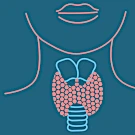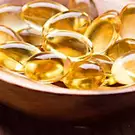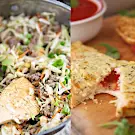What Are 'Fat Balls'—And Can They Help You Lose Weight

GETTY IMAGES
So can these fat-packed snacks really help you shed pounds? Though it seems counterintuitive, dietary fat slows digestion, which can help you stay fuller longer, says Jessica Cording, R.D., founder of Jessica Cording Nutrition. When fat enters the small intestine, this signals the release of peptides YY and CCK,
Is the keto diet right for you? See what happened when one woman tried it:
Still, the add-ins ultimately determine the nutrition content. For example, while traditional fat-ball toppings such as nuts and seeds will increase the fat, protein, and fiber content, oats or dried fruit (typical of more traditional "energy" balls), will give you more carbs, Cording says. To figure out exactly what you're getting from your fat ball, you can plug the ingredients and quantities into an online recipe calculator
In short, fat balls are definitely a healthier, smarter option for a mid-afternoon snack than grabbing a handful of sugar from the office candy bowl. And thanks to their convenient size, fat balls are especially handy if you’re a frequent traveler or constantly on the go. Cording says. )
KEEP YOUR BALLS IN CHECK
But while they can be healthy in small amounts, fat balls can quickly turn into fat bombs if you don’t practice portion control, warns Katherine Brooking, R.D., co-founder of Appetite for Health.
And though it’s tempting to pop a fat ball (or five) at lunchtime and call it good, both Brooking and Cording advise against using fat balls as a meal replacement. Yes, they offer healthy doses of protein and fat, but they can’t replace well-balanced meals chock-full of veggies, whole grains, and lean protein, Brooking says. A few bites here and there can easily add up to hundreds of calories, Brooking says. To keep the scale from creeping up, limit yourself to one or two fat balls per day.
Not to mention, scarfing down a fat ball on the go just doesn’t satisfy the way sitting down to a full meal does, making you more likely to reach for unhealthy snacks a short while later. Research backs this up: A recent Appetite study shows that people tend to eat more total calories after consuming a food labeled “snack” compared to a food labeled as a “meal.” Though all study participants ate comparable amounts of pasta, those who ate it as a snack (standing up, eaten out of a container) consumed about 50 percent more total calories afterward in the form of unhealthy snacks (animal cookies, M&Ms, salted crisps and cheese-flavored crackers), compared to those who ate their pasta as a meal (sitting down, eaten off a plate).
So, if you decide to include fat balls in your diet, just be sure to use them as a stop-gap in between meals, as opposed to a replacement for a meal. “Your brain doesn’t register that little ball as much as it does a plate of food,” Cording says. Get the healthiest bang for your nutritional buck by using nut and seed butters made with simple ingredients. Steer clear of sugar-sweetened varieties and butters with hydrogenated oil or palm oil on the ingredients list.






No comments:
Post a Comment